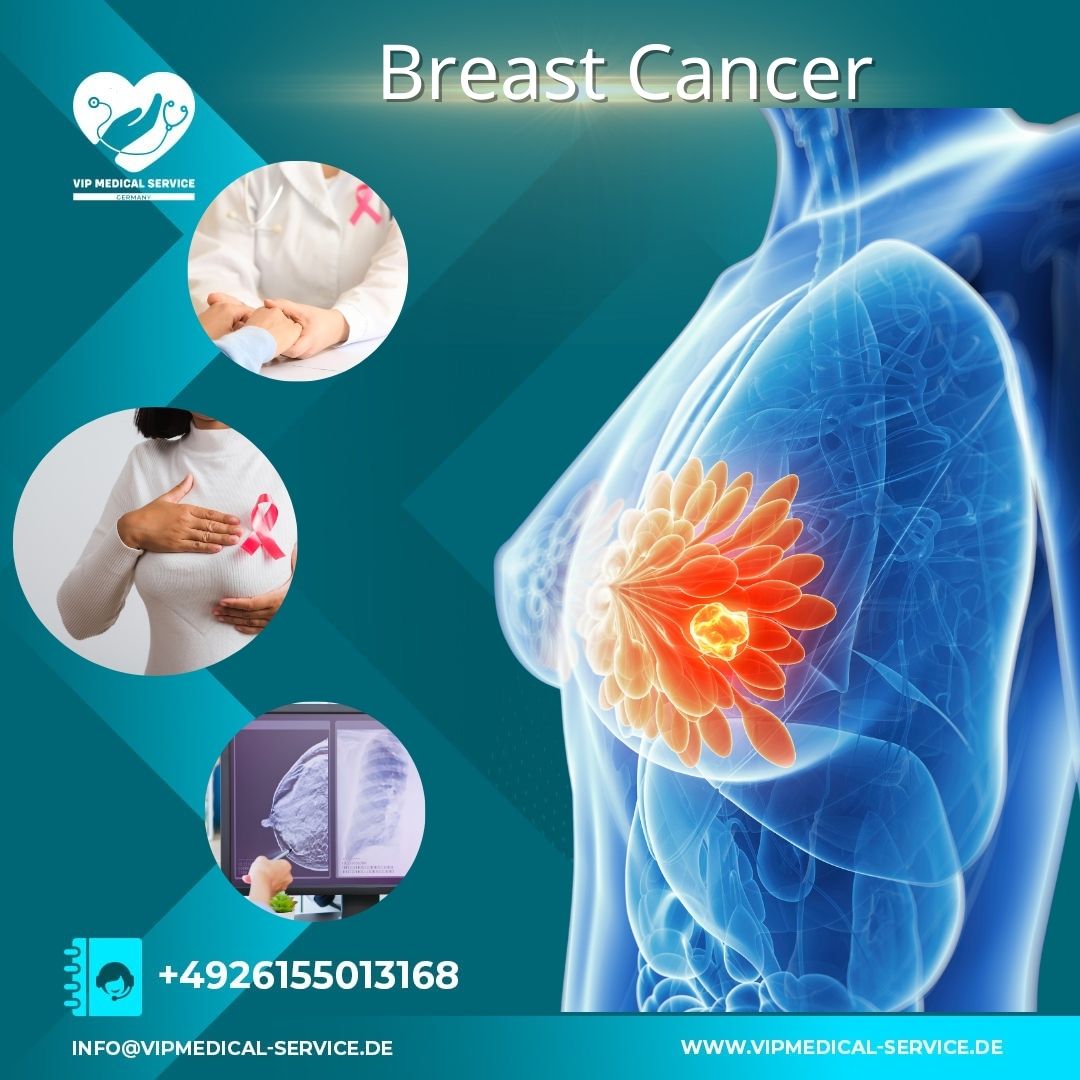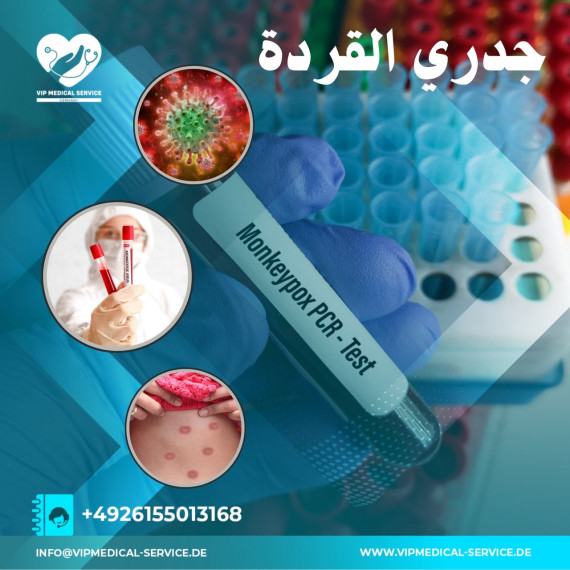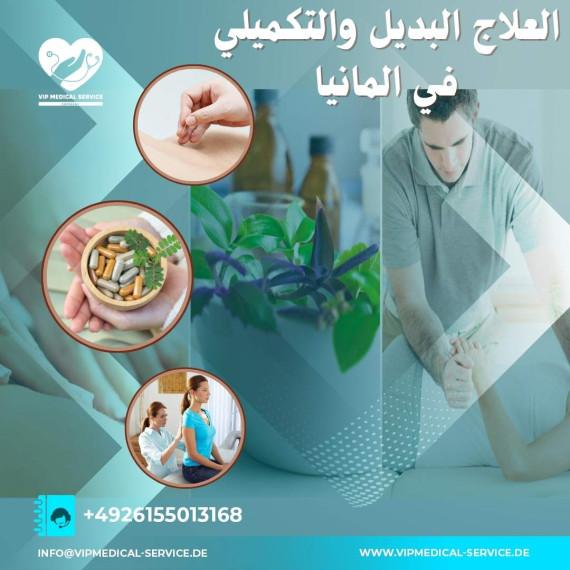Breast Cancer Overview
13 Jul, 2024 - Medizinische Informationen

Breast cancer is a type of cancer that begins in the cells of the breast. It can affect both women and men, but it is more common in women. Breast cancer occurs when breast cells grow abnormally and uncontrollably, leading to the formation of a lump (tumor) that can be benign or malignant. A benign tumor is non-cancerous and does not spread to other parts of the body, while a malignant (cancerous) tumor can invade nearby tissues and spread to other parts of the body.
Risk Factors for Breast Cancer
Several factors increase the risk of developing breast cancer, including:
- Age: The risk increases with age.
- Family History: Having first-degree relatives (mother, sister, daughter) with breast cancer increases the risk.
- Genetic Factors: Certain genetic mutations (such as BRCA1 and BRCA2) are associated with an increased risk.
- Hormonal Exposure: Hormone replacement therapy, early menstruation, or late menopause increases the risk.
- Lifestyle: Obesity, lack of physical activity, smoking, and excessive alcohol consumption can increase the risk.
Symptoms of Breast Cancer
Common symptoms of breast cancer include:
- A lump or thickening in the breast or underarm.
- Change in the size or shape of the breast.
- Skin changes over the breast (redness, dimpling, peeling).
- Unusual nipple discharge.
- Breast or nipple pain.
Breast Cancer Statistics by Country
Breast cancer statistics vary between countries and regions, depending on factors such as health awareness, healthcare systems, regular screening, genetic and environmental factors. Here’s an overview of breast cancer statistics in various countries:
Incidence Rates
- United States: Breast cancer is the most common cancer among women, affecting about 1 in 8 women during their lifetime. The incidence rate is approximately 127 cases per 100,000 women annually.
- Europe: Incidence rates vary. For example, in the UK, it’s about 150 cases per 100,000 women annually, while in Spain and Italy, the rates are slightly lower.
- Asia: Lower overall rates compared to Western countries, but increasing. In Japan and South Korea, the rates are about 60-80 cases per 100,000 women annually.
- Africa: Lower rates than Western countries but increasing due to improved medical screening and awareness. In South Africa, rates are about 20-30 cases per 100,000 women annually.
- Middle East:
- Saudi Arabia: About 22 cases per 100,000 women annually.
- United Arab Emirates: About 30 cases per 100,000 women annually.
- Egypt: About 49 cases per 100,000 women annually.
- Lebanon: Highest in the region, about 96 cases per 100,000 women annually.
- Jordan: About 41 cases per 100,000 women annually.
Mortality Rates
- United States: About 20 deaths per 100,000 women annually.
- Europe: Varies by country. In the UK, about 23 deaths per 100,000 women annually, similar to rates in Germany and France.
- Asia: Relatively lower, about 10-15 deaths per 100,000 women annually in Japan and South Korea.
- Africa: Higher due to late diagnosis and lack of quality healthcare, reaching 30-40 deaths per 100,000 women annually in some areas.
- Middle East:
- Saudi Arabia: About 10-15 deaths per 100,000 women annually.
- United Arab Emirates: About 12 deaths per 100,000 women annually.
- Egypt: About 22 deaths per 100,000 women annually.
- Lebanon: About 24 deaths per 100,000 women annually.
- Jordan: About 14 deaths per 100,000 women annually.
Survival Rates
Five-year survival rates vary globally, with general trends being:
- Developed Countries: Up to 90% or higher due to early detection and advanced treatment.
- Developing Countries: Lower, around 50-70% due to delayed diagnosis and limited access to quality care.
- Gulf States: Around 80-85% due to improved healthcare systems and increased health awareness.
- Egypt and Lebanon: Between 60-70%, with variability in healthcare quality and diagnosis timing.
- Jordan: Around 70-75%.
Countries with national early detection programs, such as mammograms, have higher early diagnosis rates and better survival rates. For example, in the US and some European countries, these programs have significantly reduced mortality rates.
Diagnosis and Treatment of Breast Cancer
Diagnosis typically involves imaging tests (like mammograms, ultrasounds, and MRI) and a biopsy of the suspicious tissue. Early diagnosis and treatment play a crucial role in improving recovery chances, so regular breast screening and preventive measures are recommended.
Treatment Protocols
Treatment protocols for breast cancer depend on the type and stage of cancer, as well as individual tumor characteristics such as hormone receptor status. Here’s an overview of treatment protocols and the latest treatment methods:
Traditional Treatments
- Surgery:
- Lumpectomy: Removing the tumor while preserving as much of the breast as possible.
- Mastectomy: Removing the entire breast, sometimes including nearby lymph nodes if the cancer has spread.
- Radiation Therapy: Used to destroy remaining cancer cells post-surgery. Often used after lumpectomy.
- Chemotherapy: Used to destroy cancer cells throughout the body. May be used before surgery to shrink the tumor or after surgery to eliminate remaining cells.
- Hormone Therapy: Used for tumors with hormone receptors (like estrogen or progesterone receptors). Includes drugs such as Tamoxifen and aromatase inhibitors.
Targeted Therapies
- Immunotherapy: Targets the immune system to attack cancer cells. Examples include monoclonal antibodies.
- Targeted Drugs: Focus on specific proteins or genes in cancer cells. Examples include Trastuzumab (Herceptin) targeting HER2/neu in breast cancer cells.
Latest Advances in Breast Cancer Treatment
- Modern Immunotherapy: Using checkpoint inhibitors like Pembrolizumab for treating certain types of triple-negative breast cancer.
- Gene Therapy: Targeting specific genetic mutations in the tumor using technologies like CRISPR for gene editing.
- New Targeted Therapies: Drugs such as PARP inhibitors (e.g., Olaparib) targeting breast cancer cells in patients with BRCA1 or BRCA2 mutations.
- Nanotechnology: Using nanoparticles to deliver drugs directly to cancer cells more effectively and with fewer side effects.
- Modern Hormonal Therapies: Using new drugs like CDK4/6 inhibitors (e.g., Palbociclib) that disrupt the cell cycle in hormone-sensitive breast cancer cells.
- Combination Immunotherapy: Combining different immune drugs to achieve a more significant effect in fighting cancer.
Advances in Diagnosis and Personalized Treatment
- Genetic Tests: Such as Oncotype DX and MammaPrint to assess recurrence risks and the benefit of chemotherapy.
- Advanced Imaging Techniques: Like breast MRI and PET-CT to improve diagnostic accuracy and treatment monitoring.
The optimal treatment for breast cancer relies on precise individual diagnosis and the collaboration of a multidisciplinary team to ensure the best possible outcomes for each patient.
Benefits of Breast Cancer Diagnosis and Treatment in Germany
Opting for breast cancer treatment in Germany offers several advantages:
- Comprehensive Healthcare System: Germany follows a holistic approach to cancer treatment, considering all factors related to the patient’s condition. Patients are managed by multiple specialists simultaneously, avoiding the confusion of switching between doctors.
- Highly Trained Doctors: Patients receive care from doctors with decades of training in world-renowned centers.
- Advanced Technology: Germany provides access to all necessary technologies for detecting, treating, and monitoring breast cancer.
- Research and Development: Universities and research centers in Germany conduct advanced research and develop new techniques in breast cancer treatment, continuously improving treatment outcomes.
- Advanced Medications: Utilization of advanced medications that target cancer cells accurately, like Trastuzumab (Herceptin), new drugs like PARP inhibitors, and CDK4/6 inhibitors. Surgical solutions are only used when absolutely necessary, and if surgery is required, great attention is given to the patient’s appearance to maintain their psychological well-being.
Leading Medical Centers for Breast Cancer Treatment in Germany
Here are some of the leading medical centers in Germany renowned for their innovation, technological advancement, and comprehensive care:
Charité – Universitätsmedizin Berlin
- Has a comprehensive breast cancer center with multidisciplinary teams.
- Utilizes the latest diagnostic and treatment technologies like breast MRI and advanced radiation therapy.
- Engages in advanced research on new treatments and immunotherapy.
Universitätsklinikum Heidelberg
- Contains a comprehensive breast cancer center offering integrated diagnostic and therapeutic services.
- Has expert teams in surgery, chemotherapy, and radiation therapy.
- Collaborates with the German Cancer Research Center (DKFZ) for innovative treatments.
German Cancer Research Center (DKFZ) in Heidelberg
- Focuses on developing new genetic and immunotherapy treatments.
- Collaborates with hospitals and medical centers to apply research in clinical treatments.
Klinikum der Universität München
- Offers comprehensive diagnostic and therapeutic services at its breast cancer center.
- Participates in numerous clinical trials and studies on new treatments.
- Has multidisciplinary teams including oncologists, surgeons, and radiation specialists.
Universitätsklinikum Hamburg-Eppendorf (UKE)
- Known for its innovative approach and advanced technology in breast cancer treatment.
- Conducts extensive research and clinical trials to improve treatment outcomes.
- Offers personalized treatment plans through a multidisciplinary team approach.
These centers provide advanced treatment options, ensuring patients receive the most current and effective care available.
Using VIP Medical Service for Breast Cancer Treatment in Germany
Seeking assistance from VIP Medical Service for breast cancer treatment in Germany can offer numerous benefits and advantages, contributing to an improved treatment experience and health outcomes for the patient. Here are the key reasons that make opting for a company like VIP Medical Service an excellent choice:
1. Comprehensive Planning and Organization
- All appointments with specialized doctors at top hospitals and medical centers are arranged, ensuring swift access to healthcare.
- The company handles travel and accommodation details, including ticket booking, hotel reservations, and transportation, relieving the patient and their family of planning hassles.
2. Access to Top Hospitals and Doctors
- VIP Medical Service collaborates with leading hospitals and specialized medical centers in Germany, ensuring first-class medical care.
- The company provides access to breast cancer specialists and surgeons renowned for their extensive experience and global reputation.
3. Personal and Language Support
- Professional translators assist in communication between the patient and the medical team, ensuring understanding of all treatment details and procedures.
- VIP Medical Service offers personal support services, including assistance with bureaucratic and medical procedures, ensuring patient comfort and focus on recovery.
4. Medical Coordination and Follow-up
- The company coordinates between different doctors to ensure treatment plan integration and avoid any conflicts or delays.
- Continuous monitoring of the patient's condition, even after returning home, ensures care continuity and improvement.
5. Comfort and Luxury
- The company offers high-level services including luxury car transportation, accommodation in upscale hotels, and providing all comforts and amenities for the patient and their family.
- Ensures a high level of privacy and confidentiality in all aspects of treatment and stay.
6. Time and Effort Saving
- Through excellent relationships with hospitals, the company can reduce waiting times for appointments and medical procedures.
- Facilitates immediate communication with hospitals and doctors to expedite treatment processes and ensure prompt care.
7. Experience and Specialization
- VIP Medical Service has extensive experience in handling breast cancer patients and organizing medical treatment trips, ensuring outstanding and effective services.
- Possesses deep knowledge of healthcare systems and procedures in Germany, facilitating optimal healthcare delivery.
8. Cost Management
- The company provides clear and detailed cost estimates, assisting the patient in financial planning.
- Can coordinate with insurance companies to ensure optimal coverage of medical costs.
In summary, relying on VIP Medical Service provides the patient with a comfortable and comprehensive treatment experience, guaranteeing access to top-notch healthcare in Germany without complexities or pressures, allowing the patient to focus on recovery.


